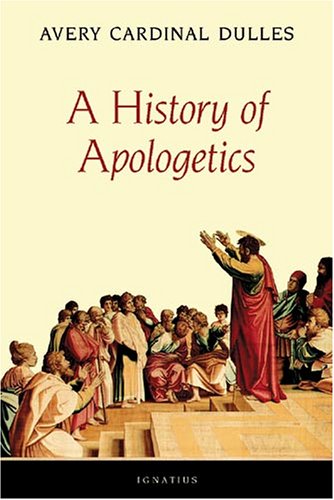A Brief Book Summary from Books At a Glance
By Steve West
About the Author
Cardinal Avery Dulles, S. J., wrote hundreds of articles and numerous books during his lifetime. He served as a professor and lecturer and was actively involved in the Catholic Church.
Introduction
In this book Avery Dulles traces the development of Christian apologetics throughout the history of the Christian church. The work is mainly descriptive, representing the various thinkers without critique (although Dulles does describe differences and disagreements between the historical figures). Both Roman Catholic and Protestant apologetics are discussed, and geographical and national emphases are noted.
Table of Contents
Foreword
Preface to First Edition
Preface to Second Edition
Chapter 1 Apologetics in the New Testament
Chapter 2 The Patristic Era
Chapter 3 The Middle Ages
Chapter 4 The Sixteenth Century through the Eighteenth Century
Chapter 5 The Nineteenth Century
Chapter 6 The Twentieth Century (Part I)
Chapter 7 The Twentieth Century (Part II)
Book Summary
Chapter 1: Apologetics in the New Testament
The apostolic preaching was a blend of history, theological reflection, and apologetics. Christ’s death and resurrection were central, and OT texts were cited for prophetic support. As the kerygma was proclaimed by the apostles, questions and objections were raised. The first witnesses maintained that Jesus the Messiah was reigning in heaven, and that the Holy Spirit had been poured out on earth. Charismatic gifts given by the Spirit were evidence that Jesus was reigning. The crucifixion was a stumbling block to both Jew and Gentile, so the apostles tried to explain its necessity from Scripture. For Jews, it was difficult to believe that the Messiah had been rejected by Israel. Matthew styled his birth narrative in an apologetic fashion, arguing that Jesus was in the line of David and born in Bethlehem. The fact that Jesus attracted so few followers during his earthly life is explained through by appeal to the “Messianic secret.” Furthermore, even the disciples are depicted as failing to understand Jesus’ teachings during his lifetime. Jesus’ miracles are treated as having limited evidential value—they really do show who he is, but it requires faith to interpret his miracles properly. The Book of Acts shows early Christian apologetics in different places and with different emphases. Stephen’s speech in Acts 7 is dependent on the OT, whereas Paul’s speeches to pagans in Acts 14 and 17 draws on natural theology. In Athens, when Paul moves from natural theology to the resurrection, he is met with scorn and objections.
Paul’s letters contain apologetic arguments on a variety of issues. He defends the resurrection, rejects idolatry, and warns against human wisdom and vain philosophy. Hebrews defends Christ by presenting him as better than everything in the past and as the fulfillment of God’s redemptive plan. Although the Gospels do not read like contemporary apologetic arguments, there are many apologetic elements in their narratives. Matthew has an apologetic cast to the birth, trial, and burial of Jesus. Luke-Acts functions, in part, to convince Rome that Christianity should be accepted as a legal religion. John’s Gospel differentiates between Israel and the Jewish leaders (the latter are guilty for condemning Jesus), and uses a universal vocabulary to help reach the pagan world with the light of Christ. None of the NT writings are exclusively or even primarily apologetic works, but many apologetic themes can be found within them.
Chapter 2: The Patristic Era
After A.D. 125, a new focus on apologetics emerged. Pagan converts and philosophers wanted to know how Christian belief aligned with philosophy. Christians also wanted to show Rome that they were not a threat, and they wanted to show Jews that Jesus was the Messiah. Before Justin Martyr, Aristides’ Apology is the most significant work of apologetics. It compares religions and argues that Christian virtues and love show Christianity’s superiority. Justin Martyr wrote two Apologies, both of which were designed to gain tolerance from Rome. He argued that Christianity helped rather than hurt society, and that many philosophers were illuminated by the logos and thus knew Christ (without conscious awareness of knowing him). There were many different apologists of quite varied gifts and abilities. Some ranted and insulted pagans and Jews, while many tried to show that Christianity was reasonable, and that the wisdom of Moses. . .
[To continue reading this summary, please see below....]The remainder of this article is premium content. Become a member to continue reading.
Already have an account? Sign In
